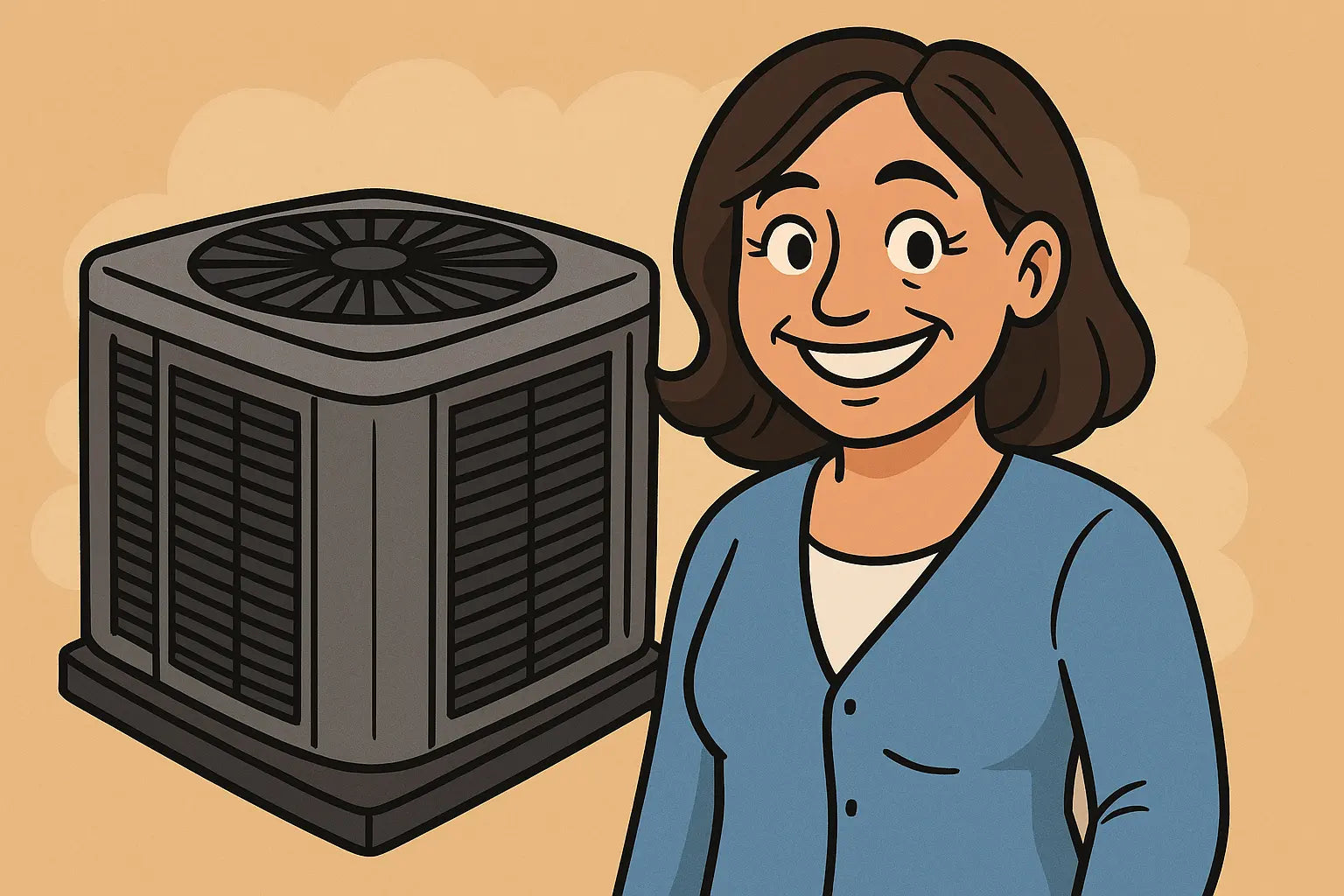Hey There, it’s Samantha! 👋
If you’re like me, once your shiny new Goodman 3 Ton 15.2 SEER2 R‑32 system is installed, you don’t want to deal with hot spots, freezing rooms, or a blower that sounds like a jet engine. That’s why airflow calibration and blower tap settings matter. This is where your system gets tailored to your home’s real-world ductwork, layout, and airflow needs—not just what’s on paper.
Today I’m breaking it all down with an easy-to-follow guide on tuning your GLXS4BA3610 condenser and CAPTA3626C3 vertical coil—plus the GR9T961005CN 96% AFUE gas furnace it’s paired with. ⚙️💨
Why Airflow Calibration Matters
If your system isn’t breathing right, you’ll pay the price—literally.
Incorrect airflow can cause:
-
High energy bills
-
Inconsistent comfort
-
Frozen coils or overheating heat exchangers
-
Premature wear on components
Proper calibration helps your system run efficiently and quietly, while keeping every room cozy. According to HVAC School, airflow is the single most overlooked and misunderstood component of proper HVAC performance—and I believe it!
Step 1: Identify Your Target Airflow
Start by checking your system’s tonnage. For this 3-ton system, the typical airflow target is around 400 CFM per ton, or about 1200 CFM total.
But—(and here’s where a pro tip comes in)—don’t just rely on averages. If you’re in a humid climate, you may want slightly lower airflow for better dehumidification. In dry regions, higher CFM helps more with temperature drop.
Your Goodman installation manual will give you a chart for target airflow versus static pressure. You can also reference Goodman’s official technical literature to compare model specs.
Step 2: Set the Blower Tap
The GR9T961005CN furnace features multiple blower tap settings. These allow your technician to adjust the blower motor speed to match the ductwork and home layout.
To access blower tap settings:
-
Turn off all power to the furnace (safety first, friends!).
-
Open the furnace control board access panel.
-
Locate the blower speed tap connectors—they’ll usually be color-coded wires.
-
Reference the wiring diagram to match speed settings to airflow target.
Tap selection is usually done in the factory default for “cooling,” but that doesn’t always match your setup. Refer to the National Comfort Institute to better understand how airflow adjustments are tested and verified by pros.
Step 3: Confirm with Static Pressure & ESP
Once the blower tap is set, it’s time to verify performance using external static pressure (ESP). You’ll need a manometer and a technician who knows how to read it. Proper static pressure should be between 0.5" and 0.8" WC for this system.
Here’s the short version:
-
Too low? Ducts are likely oversized or leaking.
-
Too high? You may have restrictive filters, poor duct design, or dirty coils.
Step 4: Double-Check Temperature Split
This part always feels like a “ta-da!” moment. Measure your system’s temperature split—that’s the difference between return and supply air temperatures.
For cooling mode, a 17°F to 21°F delta is typically ideal.
-
Less than 16°F? Could indicate poor airflow or low refrigerant.
-
More than 22°F? May suggest restricted coils or dirty filters.
Still unsure? ACCA’s Manual D guide (yep, the one used by pros) helps ensure your ductwork design and airflow delivery are aligned.
Step 5: Comfort Walkthrough 🚶
Now that you’ve made the mechanical adjustments, it’s time for the Samantha Seal of Approval—a comfort walkthrough!
Walk room to room and check:
-
Temperature consistency
-
Airflow strength at each register
-
Noise levels near return and supply vents
-
Humidity feel—especially on muggy days
If anything feels “off,” take notes and loop in your HVAC tech. You might need to adjust balancing dampers or even tweak blower speed again depending on layout and weather.
Samantha’s Final Thoughts 💬
Dialing in your Goodman GLXS4BA3610 and CAPTA3626C3 setup is like tuning a musical instrument—you’ll hear (and feel) the difference when it’s just right. And if your installer shrugs off airflow calibration? Keep looking. This isn’t optional—it’s essential.
Whether you're troubleshooting uneven cooling or setting up from scratch, give airflow the attention it deserves. Want to start with a system that makes this easy? Check out the full bundle right here 👉 Goodman 3 Ton 15.2 SEER2 System (GLXS4BA3610 + CAPTA3626C3 + GR9T961005CN)
Need more advanced troubleshooting tips for this bundle? Visit my guide: Field Guide to Troubleshooting Real‑World Failures with the Goodman GLXS4BA3610 & CAPTA3626C3.
Until next time—breathe easy, stay comfy, and trust the airflow 🌬️💙
—Samantha, Home Comfort Advisor







